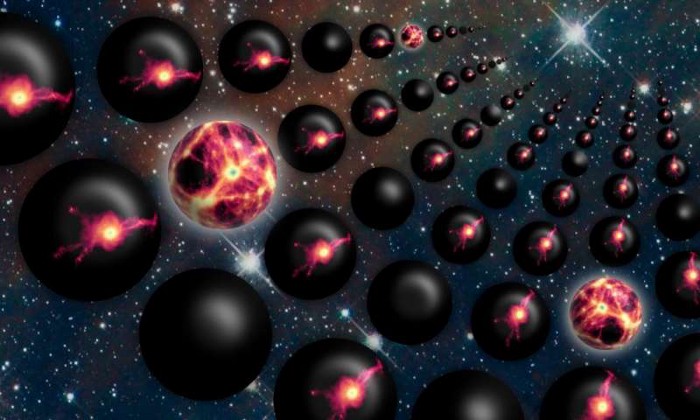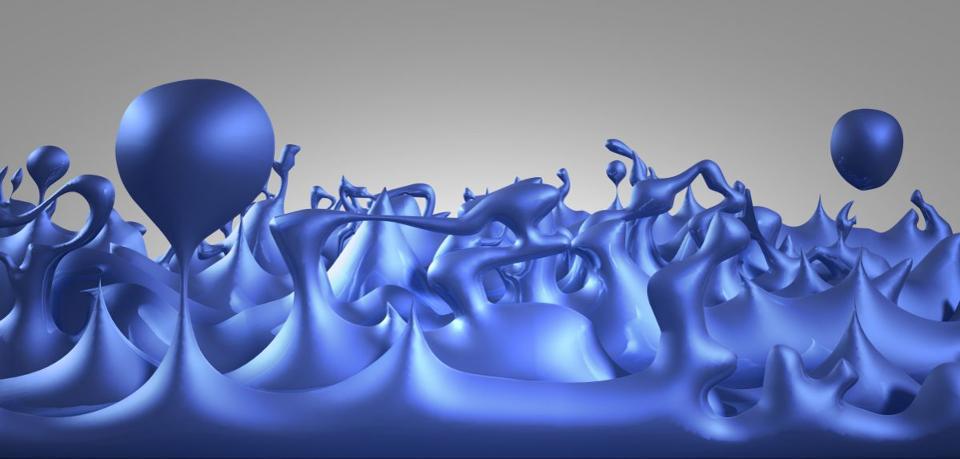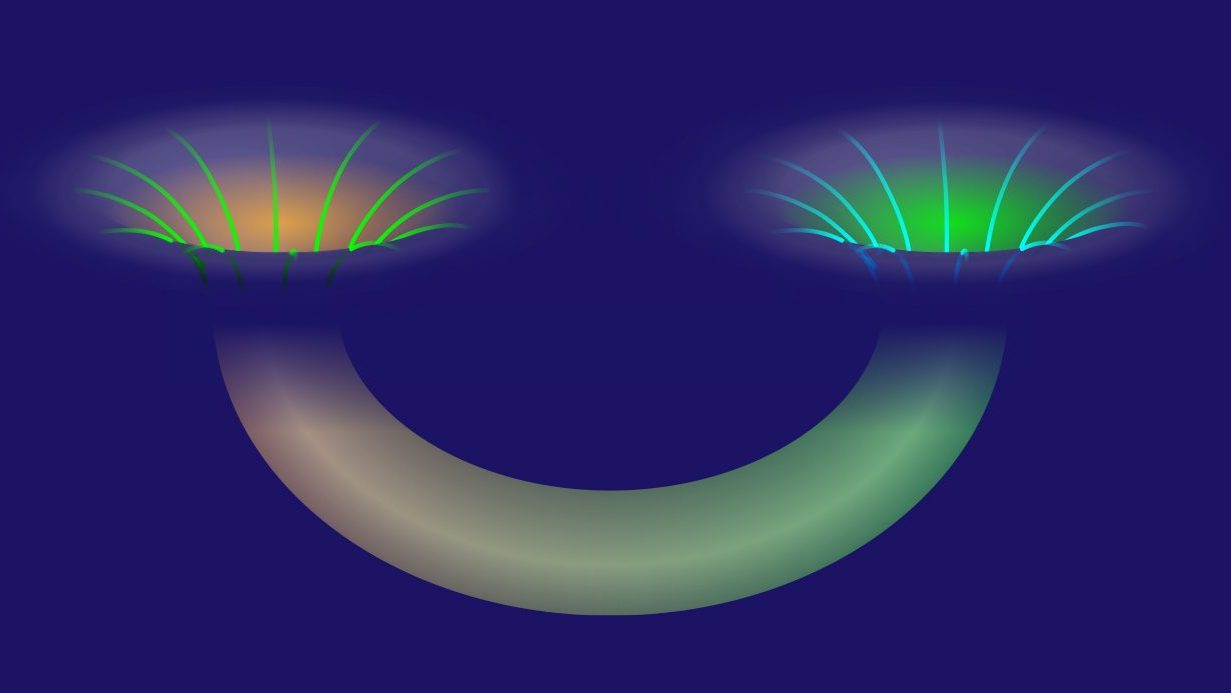Could quantum mechanics be responsible for the Mandela effect?
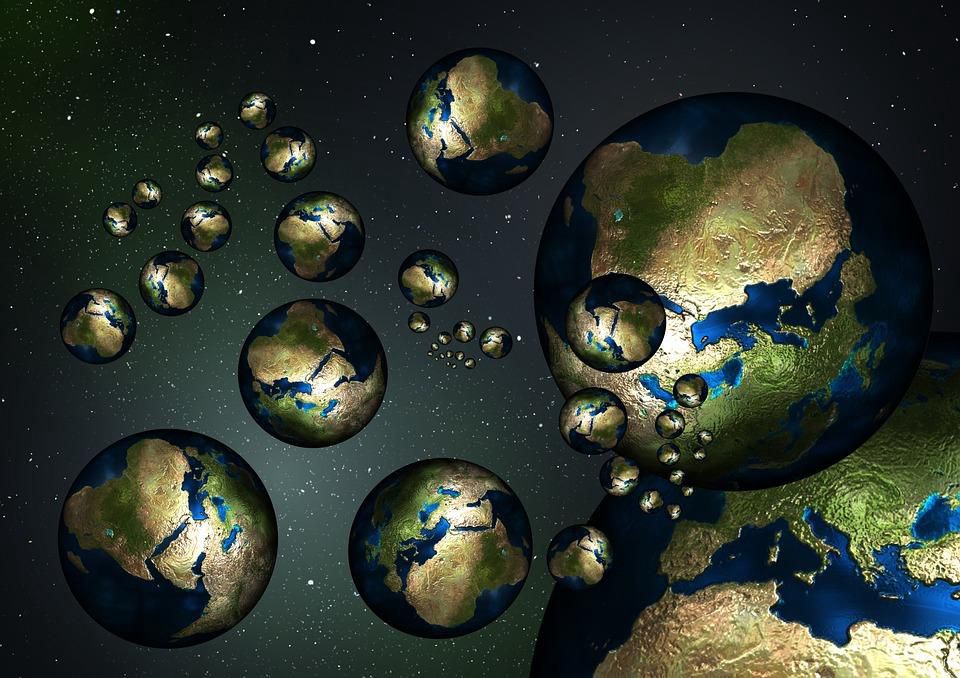
- The Mandela effect is used as a catch-all term when people have different, arguably false memories of the same historical events.
- While the conventional explanation is that humans are simply bad at (mis)remembering events, some argue that parallel Universes could be at play.
- If each possible outcome exists somewhere, in some parallel Universe, could quantum mechanics be at the root of what we experience as the Mandela effect?
There are some questions that, if you look up the answer, might make you question the reliability of your brain.
- Was there a series of books and television shows called the Berenstein Bears? Or, rather, was it the Berenstain Bears?
- Did Nelson Mandela die in prison in the 1980s, under an apartheid regime in South Africa? Or did he live to see the end of apartheid, and did he become the new nation’s leader, not dying until 2013?
- Did Darth Vader utter the iconic line, in the film The Empire Strikes Back, “Luke, I am your father?” Or did Luke tell Vader that he killed his father, only for Vader to respond, “No, I am your father?”
- Did actor/comedian Sinbad star in a 1990s movie called Shazaam? Or was that simply a mashup, existing in people’s minds only, of the Shaquille O’Neal movie Kazaam with the title and star replaced in people’s memory?
Many other examples abound, from the color of different flavor packets of Walker’s crisps to the spelling of Looney Tunes (vs. Looney Toons) and Febreze (vs. Febreeze) to whether the “Monopoly Man” has a monocle or not.
Perhaps the simplest explanation for all of these is simply that human memory is unreliable, and that as much as we trust our brains to remember what happened in our own lives, our own minds are at fault. But there’s another possibility based on quantum physics that’s worth considering: could these truly have been the outcomes that occurred for us, but in a parallel Universe? Here’s what the science has to say.

The uncertainty of quantum mechanics
One of the biggest differences between the classical world and the quantum world is the notion of determinism. In the classical world — which also defined all of physics, including mechanics, gravitation, and electromagnetism prior to the late 19th century — the equations that govern the laws of nature are all completely deterministic. If you can give details about all of the particles in the Universe at any given moment in time, including their mass, charge, position, and momentum at that particular moment, then the equations that govern physics can tell you both where they were and where they will be at any moment in the past or future.
But in the quantum Universe, this simply isn’t the case. No matter how accurately you measure certain properties of the Universe, there’s a fundamental uncertainty that prevents you from knowing those properties arbitrarily well at the same time. In fact, the better you measure some of the properties that a particle or system of particles can have, the greater the inherent uncertainty becomes — an uncertainty that you can not get rid of or reduce below a critical value — in other properties. This fundamental relation, known as the Heisenberg uncertainty principle, cannot be worked around.
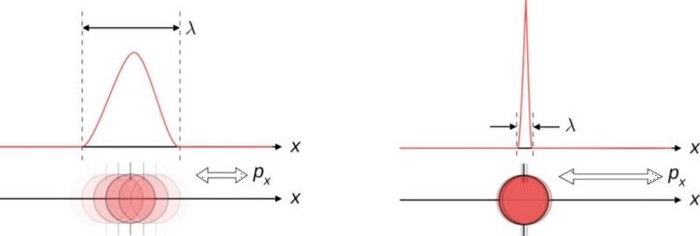
- For example, if you measure the position of a particle to extreme accuracy, the greater the uncertainty becomes in that particle’s momentum. This is true, independently, in every one of the three spatial dimensions we occupy.
- If you measure the rest mass of an unstable particle, you’ll find that the particle has what’s also called a “width,” or a fundamental uncertainty associated with its rest mass. That’s because there’s a similar uncertainty relation between time, as in the lifetime of the particle, and energy, including the rest mass energy (via E = mc2) of that particle.
- If you take a particle like an electron or a proton or a photon — a particle with an inherent angular momentum, or “spin” to it — you can measure its spin along any direction you like: the x, y, or z directions. When you do, however, you destroy any information you had before about its spin in the other two perpendicular directions. There’s a fundamental uncertainty between intrinsic angular momentum in different directions.
There are many other examples of uncertainty in quantum physics, and many of those uncertain measurements don’t just have two possible outcomes, but a continuous spectrum of possibilities. It’s only by measuring the Universe, or by causing an interaction of an inherently uncertain system with another quantum from the environment, that we discover which of the possible outcomes describes our reality.
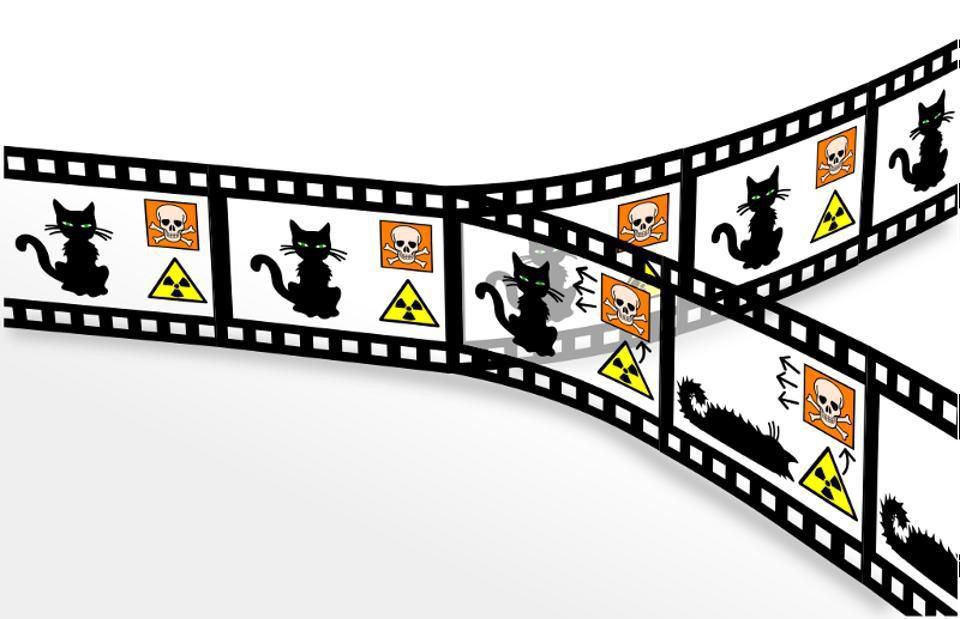
The idea of parallel Universes
One of the problems with quantum mechanics is the problem of, “What does it mean for what’s really going on in our Universe?” We have this notion that there is some sort of objective reality — a “really real reality” — that’s independent of any observer or external influence. That, in some way, the Universe exists as it does without regard for whether anyone or anything is watching or interacting with it.
This very notion is not something we’re certain is valid. Although it’s pretty much hard-wired into our brains and our intuitions, reality is under no obligation to conform to them.
What does that mean, then, when it comes to the question of what’s truly going on when, for example, we perform the double-slit experiment? If you have two slits in a screen that are narrowly spaced, and you shine a light through it, the illuminated pattern that shows up behind the screen is an interference pattern: with multiple bright lines patterned after the shape of the slit, interspersed with dark lines between them. This is not what you’d expect if you threw a series of tiny pebbles through that double slit; you’d simply expect two piles of rocks, with each one corresponding to the rocks having gone through one slit or the other.

The thing about this double slit experiment is this: as long as you don’t measure which slit the light goes through, you will always get an interference pattern.
This remains true even if you send the light through one photon at a time, so that multiple photons aren’t interfering with one another. Somehow, it’s as though each individual photon is interfering with itself.
It’s still true even if you replace the photon with an electron, or other massive quantum particles, whether fundamental or composite. Sending electrons through a double slit, even one at a time, gives you this interference pattern.
And it ceases to be true, immediately and completely, if you start measuring which slit each photon (or particle) went through.
But why? Why is this the case?
That’s one of the puzzles of quantum mechanics: it seems as though it’s open to interpretation. Is there an inherently uncertain distribution of possible outcomes, and does the act of measuring simply “pick out” which outcome it is that has occurred in this Universe?
Is it the case that everything is wave-like and uncertain, right up until the moment that a measurement is made, and that act of measuring a critical action that causes the quantum mechanical wavefunction to collapse?
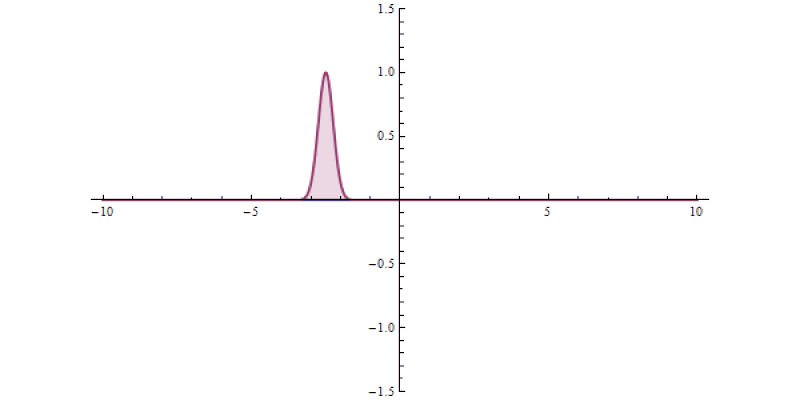
Or is it the case that each and every possible outcome that could occur actually does occur, but simply not in our Universe? Is it possible that there are an infinite number of parallel Universes out there, and that all possible outcomes occur infinitely many times in a variety of them, but it takes the act of “measurement” to know which one occurred in ours?
Although these might all seem like radically different possibilities, they’re all consistent (and not, by any means, an exhaustive list of) interpretations of quantum mechanics. At this point in time, the only differences between the Universe they describe are philosophical. From a physical point of view, they all predict the same exact results for any experiment we know how to perform at present.
However, if there are an infinite number of parallel Universes out there — and not simply in a mathematical sense, but in a physically real one — there needs to be a place for them to live. We need enough “Universe” to hold all of these possibilities, and to allow there to be somewhere within it where every possible outcome can be real. The only way this could work is if:
- the Universe was born infinite in size or infinitely long ago in time,
- and cosmological inflation — and specifically, the notion of eternal inflation — correctly describes our early, pre-Big Bang Universe.

The Universe needs to be born infinite because the number of possible outcomes that can occur in a Universe that starts off like ours, 13.8 billion years ago, increases more quickly than the number of independent Universes that come to exist in even an eternally inflating Universe. Unless the Universe was born infinite in size a finite amount of time ago, or it was born finite in size an infinite amount of time ago, it’s simply not possible to have “enough Universes” to hold all possible outcomes.
But if the Universe was born infinite and cosmic inflation occurred, suddenly the Multiverse includes an infinite number of independent Universes that start with initial conditions identical to our own. In such a case, anything that could occur not only does occur, but occurs an infinite number of times. There would be an infinite number of copies of you, and me, and Earth, and the Milky Way, etc., that exist in an infinite number of independent Universe. And in some of them, reality unfolds identically to how it did here, right up until the moment when one particular quantum measurement takes place. For us in our Universe, it turned out one way; for the version of us in a parallel Universe, perhaps that outcome is the only difference in all of our cosmic histories.
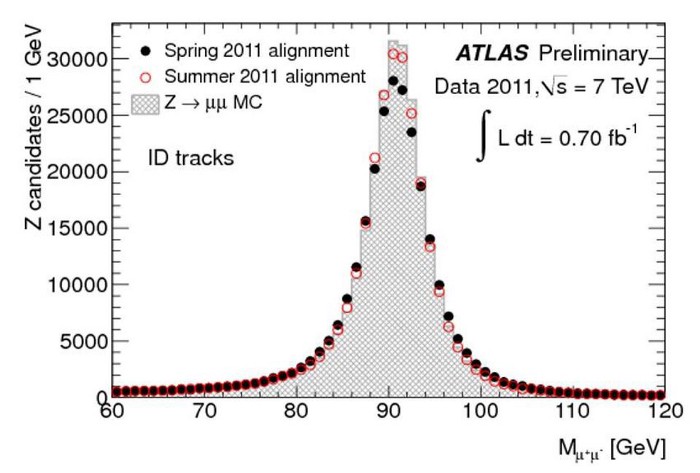
The line between certainty and uncertainty; past and future
But when we talk about uncertainty in quantum physics, we’re generally talking about an outcome whose results haven’t been measured or decided just yet. What’s uncertain in our Universe isn’t past events that have already been determined, but only events whose possible outcomes have not yet been constrained by measurables.
If we think about a double slit experiment that’s already occurred, once we’ve seen the interference pattern, it’s not possible to state whether a particular electron traveled through “slit #1” or “slit #2” in the past. That was a measurement we could have made but didn’t, and the act of not making that measurement resulted in the interference pattern appearing, rather than simply two “piles” of electrons.
There is no Universe where the electron travels either through “slit #1” or “slit #2” and still makes an interference pattern by interfering with itself. Either the electron travels through both slits at once, allowing it to interfere with itself, and lands on the screen in such a way that thousands upon thousands of such electrons will expose the interference pattern, or some measurements occurs to force the electron to solely travel through “slit #1” or “slit #2” and no interference pattern is recovered.
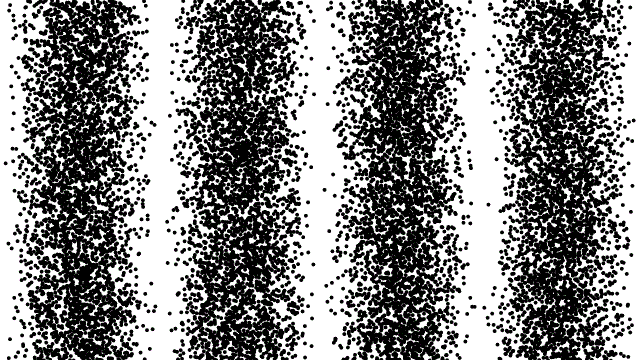
What does this mean?
It means — as was recognized by Heisenberg himself nearly a century ago — that the wavefunction description of the Universe does not apply to the past. Right now, there are a great many things that are uncertain in the Universe, and that’s because the critical measurement or interaction to determine what that “thing’s” quantum state is has not yet been taken.
In other words, there is a boundary between the classical and quantum — the definitive and the indeterminate — and the boundary between them is when things become real, and when the past becomes fixed. That boundary, according to physicist Lee Smolin, is what defines “now” in a physical sense: the moment where the things that we’re observing at this instant fixes certain observables to have definitively occurred in our past.
We can think about infinite parallel Universes as opening up before us as far as future possibilities go, in some sort of infinitely forward-branching tree of options, but this line of reasoning does not apply to the past. As far as the past goes, at least in our Universe, previously determined events have already been metaphorically written in stone.

Is the Mandela effect all about false memory, or could we be remembering the real truth?
In a quantum mechanical sense, this boils down to two fundamental questions.
- Is it possible that there are multiple possible past histories of the Universe, where different observable, macroscopic outcomes have occurred, that would lead to a Universe, today, that has the same quantum state that our Universe possesses?
- And is it possible that a thought, memory, past experience, or even a person’s consciousness from one of those other Universes could overlap or even “swap” with one from this present Universe we inhabit?
The answer seems to be “no” and “no.” To achieve a macroscopic difference from quantum mechanical outcomes means we’ve already crossed into the classical realm, and that means the past history is already determined to be different. There is no way back to a present where Nelson Mandela dies in 2013 if he already died in prison in the 1980s.
Furthermore, the only places where these “parallel Universes” can exist is beyond the limit of our observable Universe, where they’re completely causally disconnected from anything that happens here. Even if there’s a quantum mechanical entanglement between the two, the only way information can be transferred between those Universes is limited by the speed of light. Any information about what occurred “over there” simply doesn’t exist in our Universe.
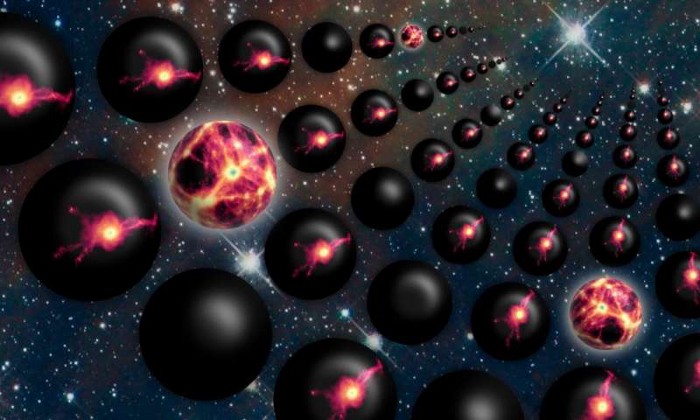
The truth is that there may well be parallel Universes out there in which all of these things did occur. Maybe there is a Berenstein Bears out there, along with Shazaam the movie and a Nelson Mandela who died in prison in the 1980s. But that has no bearing on our Universe; they never occurred here and no one who “remembers” otherwise is correct. Although the neuroscience of human memory is not fully understood, the physical science of quantum mechanics is well-enough understood that we know what’s possible and what isn’t. You do have a faulty memory, and parallel Universes aren’t the reason why.


